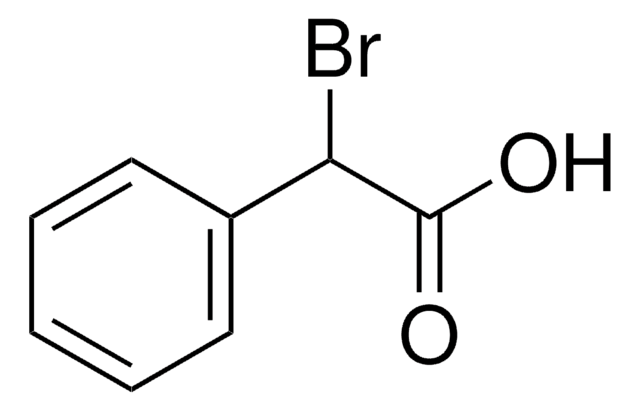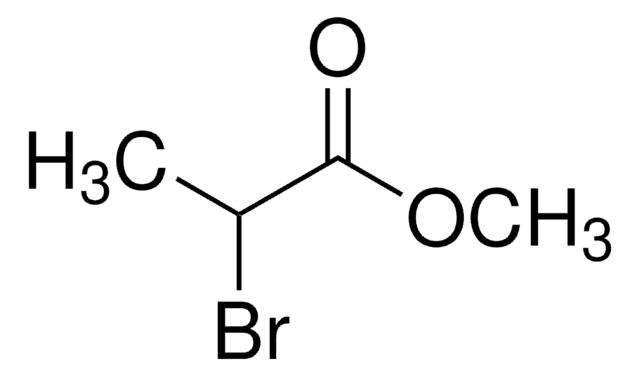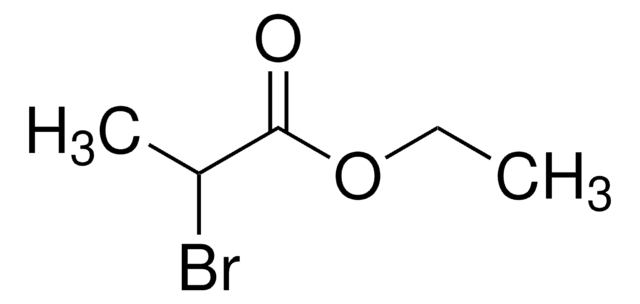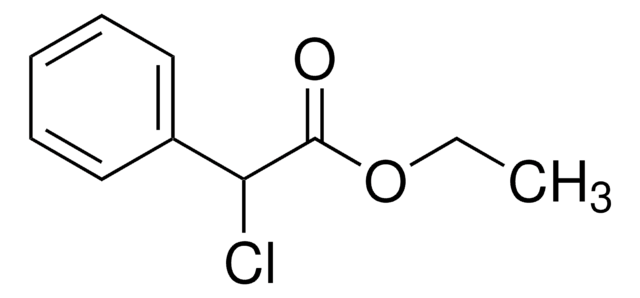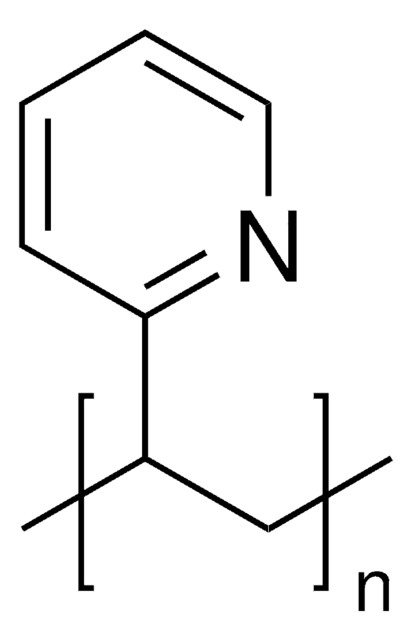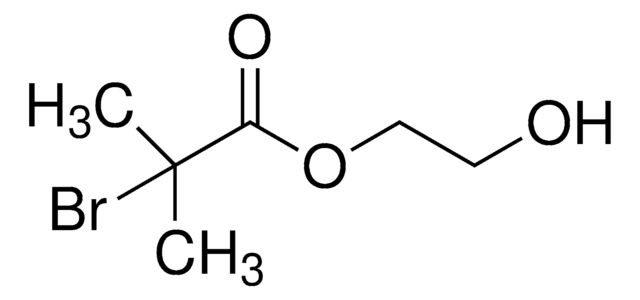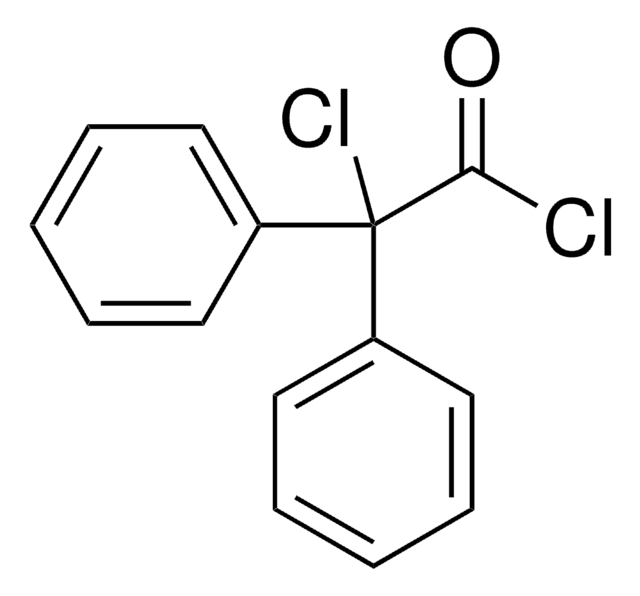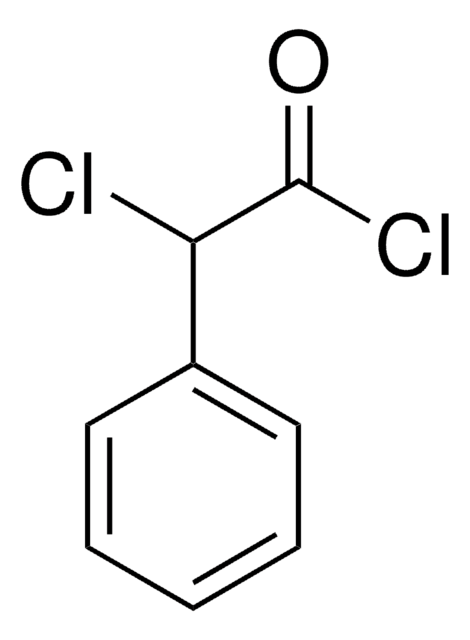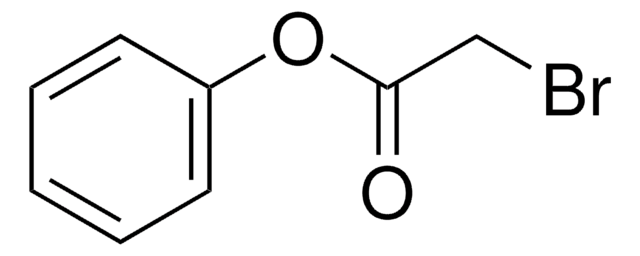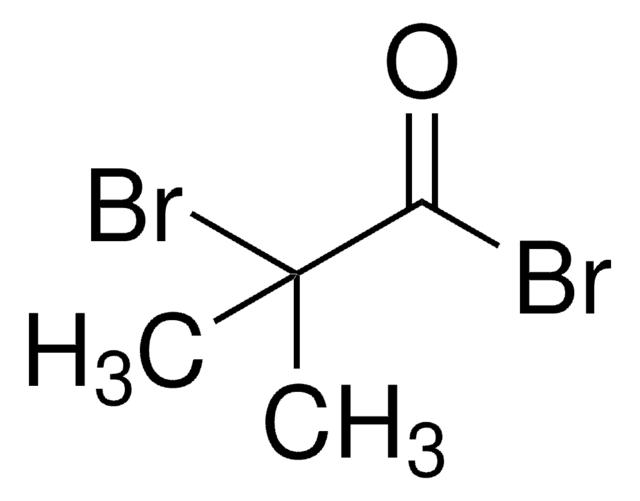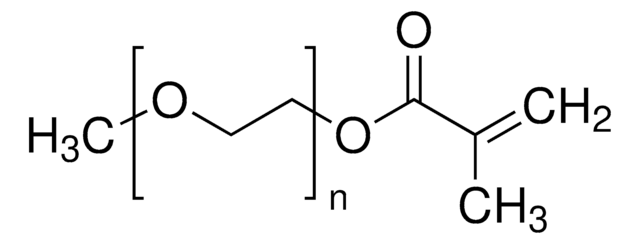554065
Ethyl α-bromophenylacetate
97%
Sinónimos:
α-Bromobenzeneacetic acid ethyl ester, α-Bromophenylacetic acid ethyl ester, 2-Bromo-2-phenylacetic acid ethyl ester, Ethyl (±)-α-bromobenzeneacetate, Ethyl 2-bromo-2-phenylacetate, Ethyl 2-bromophenylacetate
About This Item
Productos recomendados
Nivel de calidad
Ensayo
97%
índice de refracción
n20/D >1.5390 (lit.)
bp
89-92 °C/0.9 mmHg (lit.)
densidad
1.389 g/mL at 25 °C (lit.)
grupo funcional
bromo
ester
phenyl
cadena SMILES
CCOC(=O)C(Br)c1ccccc1
InChI
1S/C10H11BrO2/c1-2-13-10(12)9(11)8-6-4-3-5-7-8/h3-7,9H,2H2,1H3
Clave InChI
BKTKLDMYHTUESO-UHFFFAOYSA-N
Categorías relacionadas
Aplicación
EBPA may be used as an initiator for the following:
- polymerization of dimethyl(methacryloyloxymethyl) phosphonate
- polymerization of methyl methacrylate (MMA)
- polymerization of trimethylolpropane triacrylate(TMPTA)
Palabra de señalización
Danger
Frases de peligro
Consejos de prudencia
Clasificaciones de peligro
Eye Dam. 1 - Skin Corr. 1B
Código de clase de almacenamiento
8A - Combustible corrosive hazardous materials
Clase de riesgo para el agua (WGK)
WGK 3
Punto de inflamabilidad (°F)
230.0 °F - closed cup
Punto de inflamabilidad (°C)
110 °C - closed cup
Equipo de protección personal
Faceshields, Gloves, Goggles, type ABEK (EN14387) respirator filter
Elija entre una de las versiones más recientes:
¿Ya tiene este producto?
Encuentre la documentación para los productos que ha comprado recientemente en la Biblioteca de documentos.
Los clientes también vieron
Nuestro equipo de científicos tiene experiencia en todas las áreas de investigación: Ciencias de la vida, Ciencia de los materiales, Síntesis química, Cromatografía, Analítica y muchas otras.
Póngase en contacto con el Servicio técnico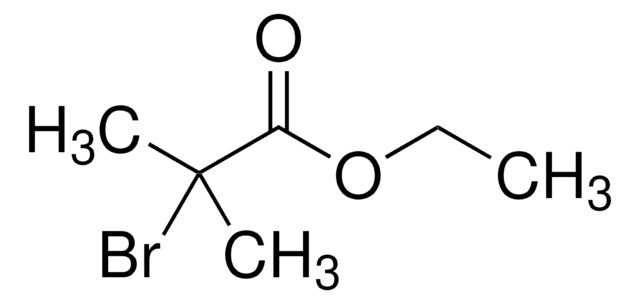

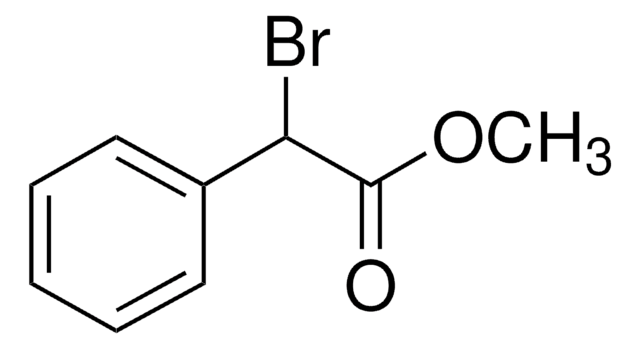
![Tris[2-(dimethylamino)ethyl]amine 97%](/deepweb/assets/sigmaaldrich/product/structures/695/792/ee0ff167-22a3-43a7-83a1-6c4908adf0ae/640/ee0ff167-22a3-43a7-83a1-6c4908adf0ae.png)
